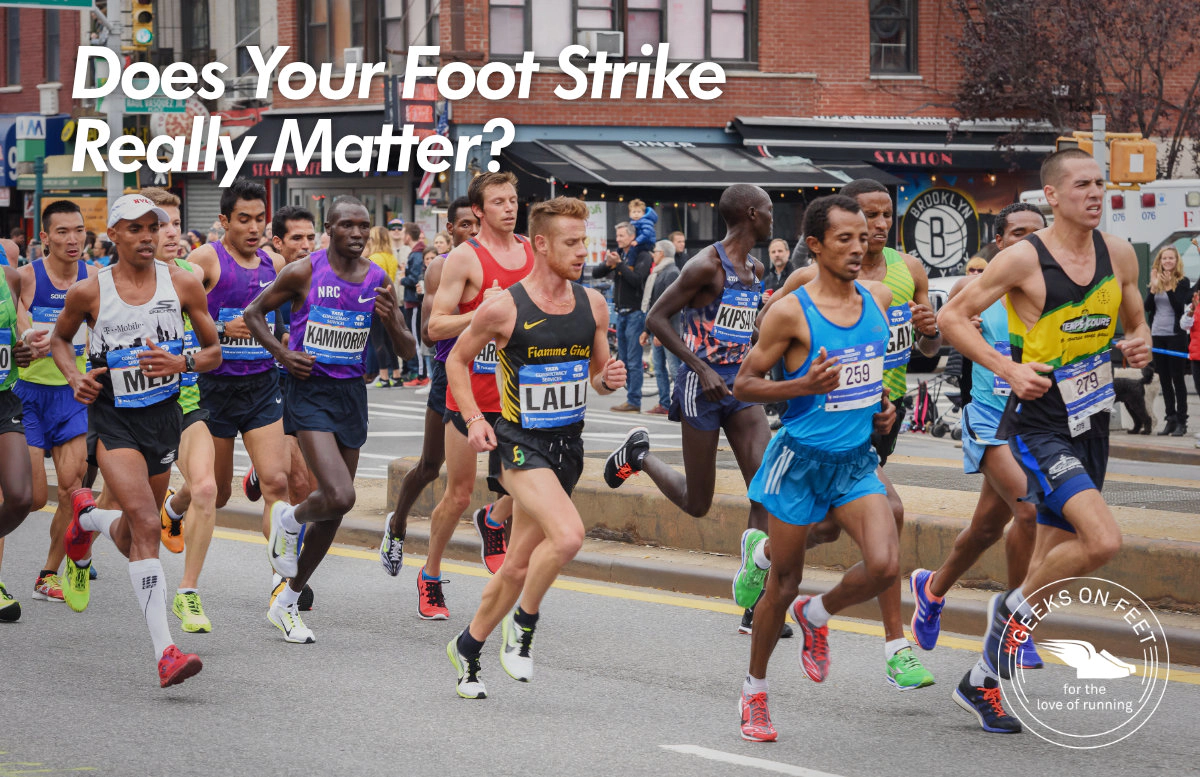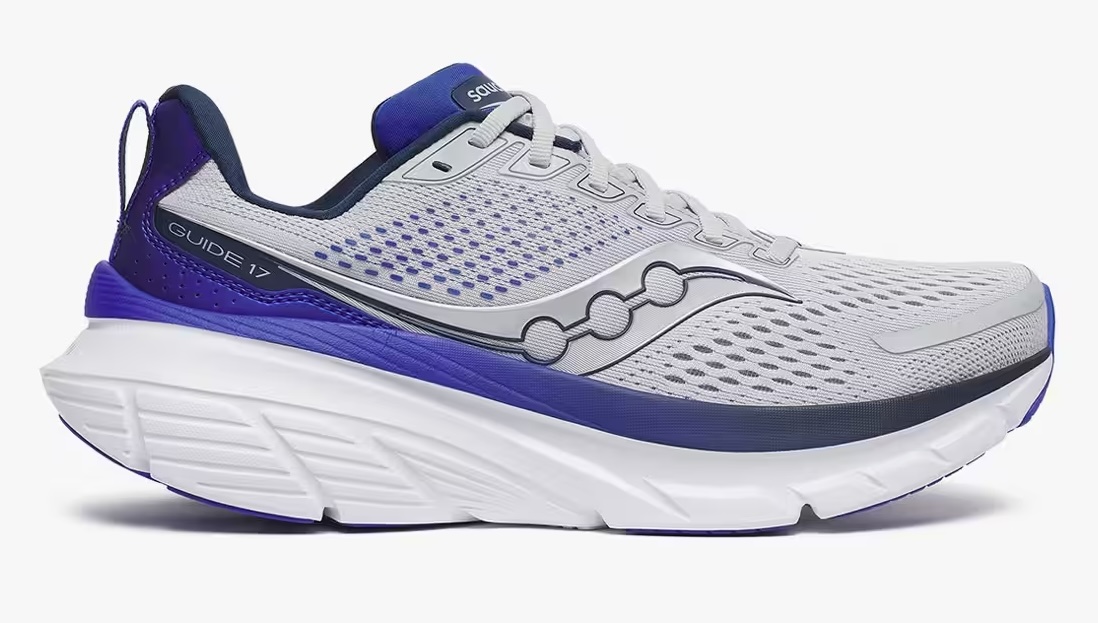
If you’ve been running long enough, you’ve probably heard some variation of this advice: “Heel striking wastes energy. To be efficient, you need to land on your forefoot like the elites.”
It’s a compelling idea. After all, forefoot runners look light, springy, and fast. And there’s no shortage of running coaches or YouTube influencers who’ll tell you that your form, especially your foot strike is making you slow.
But does foot strike actually matter for running economy, which is the amount of oxygen you burn at a given pace?
A meta-analysis published in Sports Medicine helps shed some light. And as is often the case, the science is more complicated and doesn’t agree with the conventional wisdom.
Running economy (RE) is essentially your “fuel efficiency”: how much oxygen you use at a given speed. Think of it like fuel efficiency in a car. Two cars going 60 km/h might be vastly different in how much fuel they burn. Two runners with the same VO₂ max and lactate threshold can race very differently depending on their RE. It’s often what separates finishers from podium-seekers, especially in longer races.
What makes it tricky is that RE is influenced by a tangled mix of physiology, running mechanics, and gear (especially running shoes). And foot strike, for years, has been viewed as one of those critical mechanical pieces.
First, the basics. Foot strike is how and where the foot touches the ground when running:
Heel strike (rear-foot): Runner lands heel-first with your toes pointing slightly up.
Mid-foot strike: Runner lands relatively flat, evenly between heel and ball of the foot.
Fore-foot strike: Runner lands on the ball of your foot first, with the heel touching down lightly afterward (or sometimes not at all).
While recreational runners mostly heel strike, elite runners often showcase a mix, varying by pace and terrain.
The 2024 systematic review and meta analysis, led by B. Van Hooren and colleagues, sifted through over 1,900 studies and pooled the data from 51 of them, including more than 1,100 runners to understand what bio-mechanical factors correlate with better running economy. One of the questions they looked at: Do runners who habitually strike with the heel, midfoot, or forefoot have meaningful differences in economy?
Their conclusion: not really.
The pooled results showed a negligible difference in oxygen cost between heel strikers and mid/forefoot strikers (Hedges g = –0.02). Even when foot strike was analyzed as a continuous angle (from more toe-down to more heel-first), the correlation with running economy was trivial (r ≈ 0.08–0.10).
Mid & Fore-foot Strike: Calf muscles contract more slowly using the achilles tendon as a “free” spring, so theoretically saving energy. But this demands higher muscle forces at the ankle early in stance, raising energy costs.
Heel Strike: While some braking occurs, the overall metabolic impact is minimal, as these runners tend to adjust cadence and stride mechanics for better economy.
In theory, these trade-offs cancel each other out. And in practice, that’s exactly what the data shows: no net advantage to any one strike style when it comes to economy.
If foot-strike pattern isn’t the factor, what factors truly differentiate more economical runners?
Here’s what most biomechanics studies consistently find important:
Cadence (Step Rate):
Economical runners typically run with slightly quicker steps (3–5% higher cadence). Faster cadence reduces stride length, decreases vertical bounce, and softens braking forces—saving precious oxygen. Cadence Training
Less Bounce (Vertical Oscillation):
Keeping vertical movement minimal (around 1–2 cm lower bounce) helps runners waste less energy moving up and down, instead directing energy forward. Optimizing Vertical Oscillation
Higher Leg Stiffness (Elasticity):
Think of your legs like springs. Runners with better economy maintain higher stiffness, allowing their tendons to efficiently recycle energy from every step instead of absorbing it.
Avoid Overstriding:
Landing closer to under your center of mass, regardless of your strike pattern, reduces braking force. Less braking means less energy spent re-accelerating with every stride. Prevent Overstriding
Quiet Upper Body and Arms:
A stable torso and relaxed, minimal arm swing reduce unnecessary muscular effort, leading to lower overall energy costs. Arm Swing & Running Form
Slightly Flatter Foot at Landing:
Landing with your ankle in a mild “toe-up” position (moderate dorsiflexion) smooths your transition from landing to propulsion without adding significant braking or shock.
Shoes to Smoothen Foot Transition
Rocker shoes with high heel spring & bevel are particularly beneficial for heel strikers—who constitute around 70% of runners—because they mimic the natural heel rocker of the foot, smoothing the transition from heel‐strike to mid‑stance. By encouraging a gradual roll-forward, they reduce the abrupt loading that strains passive structures and shin‑area muscles like the anterior tibialis. This softens the impact, lowers eccentric demand on the tibialis when the foot lowers, and decreases risk of shin splints. Additionally, bevels become more important in thicker or stiffer shoes, helping preserve efficient gait mechanics and overall comfort.

Exact Foot-Strike Pattern: Heel, mid-foot, or fore-foot, choose what feels natural and injury-free. Each style can be equally economical.
Precise Knee and Hip Angles at Landing: Minor differences don’t meaningfully impact your running economy. Avoid obsessing over textbook angles.
Based on this review, the answer for most runners is “No”.
Switching from heel to forefoot (or vice versa) doesn’t appear to offer meaningful gains in running economy. And trying to force a new strike pattern can introduce unfamiliar stress on tendons and muscles, increasing injury risk without a guaranteed benefit.
If you’re uninjured and comfortable, there’s little reason to mess with your strike pattern in pursuit of efficiency.
So instead, zero in on these proven factors: quicker cadence, reduced vertical bounce, avoid overstriding, springy leg stiffness, softer braking, and a stable upper body. Nail these fundamentals, and your foot strike will naturally settle into the pattern best suited to your body and you’ll save oxygen without unnecessary bio-mechanical overhauls.
Cover image by Steven Pisano licensed under CCBY 2.0
Courtesy: Team Run Mechanics. This article was first published on runmechanics.in